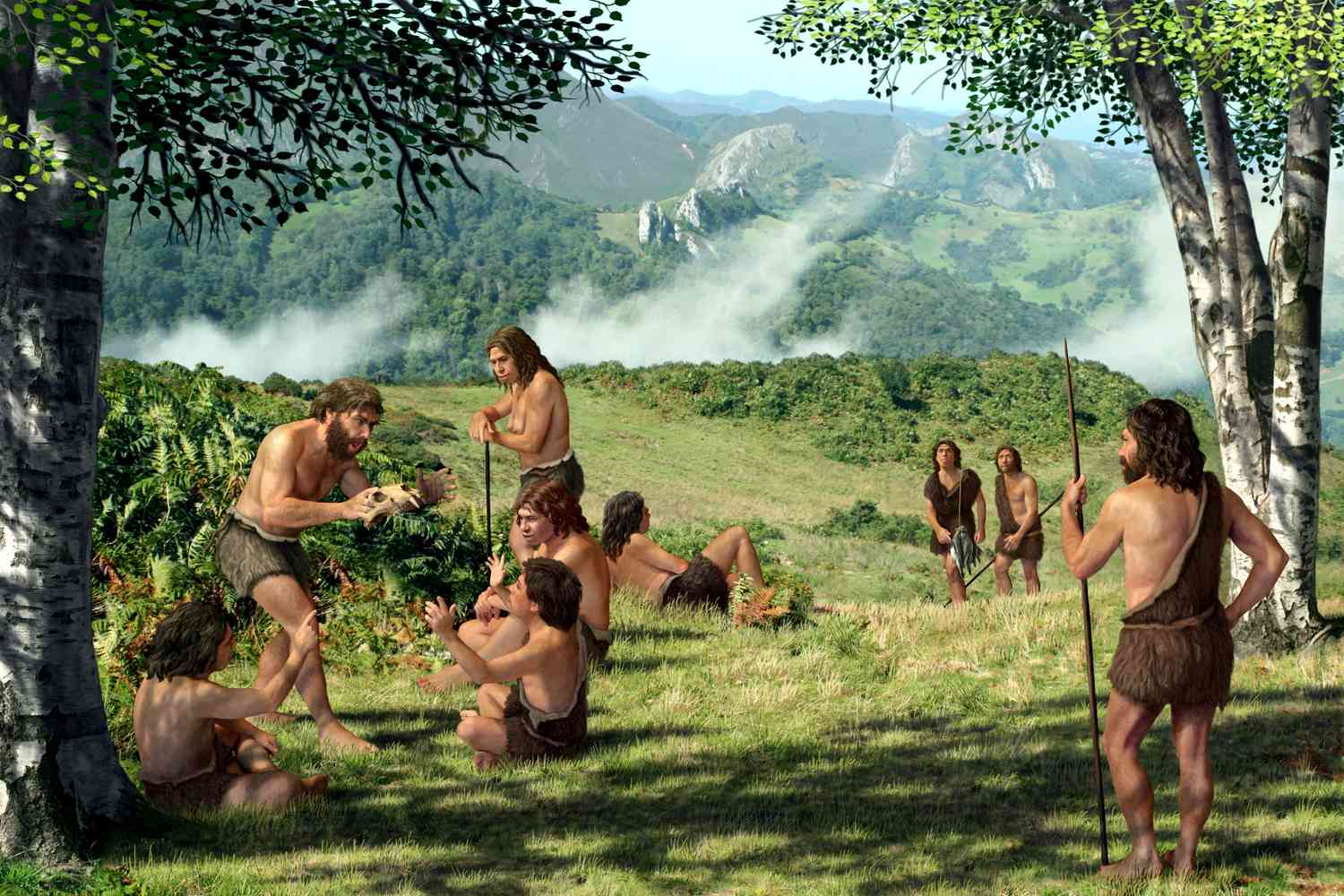
The Paleolithic Era, also known as the Old Stone Age, is a fascinating period in human history that spanned from around 2.6 million years ago to about 10,000 years ago. During this time, early humans roamed the Earth as hunter-gatherers, relying on stone tools and their environment for survival. The Paleolithic Era is a crucial period that shaped our ancestors’ way of life and played a significant role in our evolution as a species. From impressive artistic expressions to incredible discoveries, the Paleolithic Era is filled with astonishing facts that continue to captivate scientists and historians to this day. In this article, we will delve into 12 astonishing facts about the Paleolithic Era, offering insight into the lives of our ancient ancestors and the tremendous achievements they accomplished.
Key Takeaways:
- The Paleolithic Era, or Stone Age, was a time when early humans hunted, gathered, and created amazing cave paintings. They used fire, made tools, and even had their own languages!
- The end of the Paleolithic Era marked a big change as people started farming instead of hunting and gathering. This era shows how our ancestors survived and thrived, paving the way for human civilization.
Hunter-Gatherers: The Original Food Foragers
The Paleolithic people were hunter-gatherers, relying on hunting wild animals and gathering plants for their sustenance. They were skilled in tracking animals and had an in-depth knowledge of edible plants in their surroundings.
Fire: A Game-Changer
The mastery of fire was a pivotal point in the Paleolithic Era. Fire provided warmth, protection from predators, and the ability to cook food, making it easier to digest and unlocking new nutritional possibilities.
Cave Paintings: A Glimpse into the Past
Paleolithic humans expressed their creativity through cave paintings. These intricate artworks provide valuable insights into their daily lives, depicting scenes of hunting, rituals, and the animals they encountered.
Tools and Weapons: Stone Age Ingenuity
The Paleolithic people ingeniously crafted tools and weapons using stone, bone, and antler. These implements, such as handaxes and spears, were instrumental in their survival, enabling them to hunt and defend themselves.
Megafauna: Giants of the Ice Age
The Paleolithic Era was characterized by the presence of magnificent creatures known as megafauna. Woolly mammoths, saber-toothed cats, giant sloths, and other awe-inspiring animals roamed the Earth during this time.
Migration: Following the Resources
Paleolithic humans were nomadic, following the seasonal availability of resources. They migrated across great distances in search of food, water, and favorable conditions for survival.
Ritualistic Burials: Honoring the Dead
Evidence of ritualistic burials have been found in Paleolithic archaeological sites. These burials indicate that early humans had a concept of the afterlife and engaged in mourning and symbolic rituals.
Language and Communication: The Birth of Expression
Although the specifics remain unknown, it is widely believed that early humans developed rudimentary forms of communication during the Paleolithic Era. Language allowed for more efficient cooperation, sharing knowledge, and expressing emotions.
Cultural Diversity: Hunter-Gatherers Can Differ
The Paleolithic Era was not a monolithic period. Different groups of hunter-gatherers had their own unique cultures and traditions. This diversity is evidenced by variations in cave art, tool designs, and burial practices.
Technological Advancements: Innovations in the Stone Age
Over time, Paleolithic humans made significant technological advancements. They discovered new ways to shape stones, creating more specialized tools and improving their hunting and gathering techniques.
Adaptability: Surviving Extreme Environments
Paleolithic humans demonstrated remarkable adaptability, surviving in various environments, from freezing tundra to arid deserts. Their ability to adapt enabled them to thrive and expand their territories.
End of the Paleolithic Era: The Dawn of Agriculture
The Paleolithic Era came to an end with the emergence of agriculture around 10,000 BCE. The transition from a hunter-gatherer lifestyle to settled farming communities marked a significant shift in human history.
The 12 astonishing facts about the Paleolithic Era highlight the resilience, creativity, and adaptability of our early ancestors. Their innovations and cultural practices laid the foundation for the development of human civilization. Exploring this remarkable era allows us to appreciate our roots and understand the challenges and triumphs of those who came before us.
Conclusion
In conclusion, the Paleolithic Era was a fascinating period in human history that spanned over 2.5 million years. It was a time when early humans relied on hunting, gathering, and toolmaking to survive. Throughout this era, significant advancements were made in technology, art, and social organization. From the discovery of fire to the development of more efficient hunting techniques, the Paleolithic Era laid the foundation for our modern civilization.Understanding the Paleolithic Era not only provides us with insights into our ancient ancestors but also helps us appreciate the journey of human evolution. The skills and innovations developed during this era shaped the way we live today. By studying this remarkable period, we gain a deeper understanding of our place in the world and the incredible achievements of those who came before us.
FAQs
1. What is the Paleolithic Era?
The Paleolithic Era, also known as the Old Stone Age, refers to the time period from about 2.5 million years ago to around 10,000 years ago. It was characterized by the use of stone tools, hunting, gathering, and the development of early forms of human art.
2. How did early humans survive during the Paleolithic Era?
Early humans survived during the Paleolithic Era by hunting animals for food, gathering plants and fruits, and creating tools from stone and bone. They also developed social systems and lived in small nomadic groups.
3. What were the major advancements during the Paleolithic Era?
Some of the major advancements during the Paleolithic Era include the discovery and use of fire, the development of more sophisticated tools and weapons, and the creation of cave paintings and sculptures.
4. How did the Paleolithic Era contribute to human evolution?
The Paleolithic Era played a crucial role in human evolution. It allowed early humans to adapt to different environments, develop complex cognitive skills, and improve their communication and socialization abilities. These advancements were essential in paving the way for further changes and advancements in subsequent eras.
5. How do we know about the Paleolithic Era?
Our knowledge of the Paleolithic Era comes from various sources, including archaeological discoveries, cave paintings, artifacts, and the study of skeletal remains. By piecing together this evidence, scientists and researchers have been able to reconstruct the lifestyle and culture of early humans during this era.
If you found these Paleolithic Era facts captivating, why not continue your prehistoric exploration? Delve into the enigmatic world of Bhimbetka's rock shelters, where ancient artists left their mark on history. Each destination holds its own unique story, waiting to be discovered by curious minds like yours. So, which fascinating chapter of human history will you explore next?
Was this page helpful?
Our commitment to delivering trustworthy and engaging content is at the heart of what we do. Each fact on our site is contributed by real users like you, bringing a wealth of diverse insights and information. To ensure the highest standards of accuracy and reliability, our dedicated editors meticulously review each submission. This process guarantees that the facts we share are not only fascinating but also credible. Trust in our commitment to quality and authenticity as you explore and learn with us.


